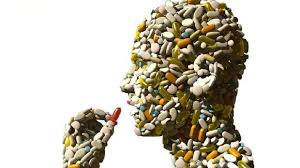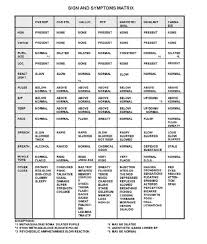 In recent weeks, the New Jersey Legislature has identified cannabis-impaired drivers, which will require training hundreds of new Drug Recognition Experts — as a cost that is potentially crippling to smaller municipalities. Several New Jersey Municipal Court prosecutors agree, stating that police training costs is the single-most important challenge that must be surmounted before legalization. One prosecutor states, “We have an obligation to protect the public especially because this is the most densely populated state in the nation.”
In recent weeks, the New Jersey Legislature has identified cannabis-impaired drivers, which will require training hundreds of new Drug Recognition Experts — as a cost that is potentially crippling to smaller municipalities. Several New Jersey Municipal Court prosecutors agree, stating that police training costs is the single-most important challenge that must be surmounted before legalization. One prosecutor states, “We have an obligation to protect the public especially because this is the most densely populated state in the nation.”
The recent push in Pennsylvania and New Jersey for the legalization of recreational marijuana, has pushed to the forefront the issue of what is a DRE and to what can a DRE testify in court about marijuana use and impairments. I think a DRE is junk science and testimony rendered by untrained lay person.
The Massachusttes Supreme Court has ruled that a police officer not qualified as an expert cannot testify that a person is impaired due to marijuana because the effects of marijuana may “vary greatly from one individual to another, and those effects are as yet not commonly known.” A police officer or anyone may testify to an opinion that someone was intoxicated by alcohol because the opinion is not based on scientific or specialized knowledge, but lies within the realm of common experience. However, there is no such general knowledge related to the effects of marijuana because they vary greatly among individuals.
More importantly, can a police officer, who has not been qualified as an expert witness, testify to the effects of marijuana on a person such as bloodshot eyes, lack of coordination and/or balance, reaction times, slow speech, paranoia, or relaxed responses? Yes. A police officer may testify to the observed physical characteristics of the driver such as blood shot eyes, drowsiness, and lack of coordination. The officer is not permitted to offer an opinion that these characteristics mean that the driver is under the influence of marijuana.
By contrast, the court noted in considering whether a driver is operating under the influence of marijuana, there is as yet no scientific agreement on whether, and, if so, to what extent, these types of tests are indicative of marijuana intoxication. The research on the efficacy of FSTs to measure marijuana impairment has produced highly disparate results. Some studies have shown no correlation between inadequate performance on FSTs and the consumption of marijuana; other studies have shown some correlation with certain FSTs, but not with others; and yet other studies have shown a correlation with all of the most frequently used FSTs. In addition, other research indicates that less frequently used FSTs in the context of alcohol consumption may be better measures of marijuana intoxication.
This tells us a non-medically trained police office who may have graduated college is rendering an opinion that a subject is under the influence of a drug or drugs that render the subject unable to safely operate a motor vehicle. This opinion is based upon 2-3 weeks of training by other state troopers. I think this training is ridiculous.
Pennsylvania State Police testing steps are as follows: 1) Miranda Warning Given/By; 2) Inquiry Of Foods Eaten Today?/When? 3) Have You Been Drinking?/Time Last Drink? 4) Last Sleep?/How Long? 5) Presence Of Illness Or Injury 6) Inquiry Is Subject Is Diabetic Or Epileptic? 7) Insulin Dependent? 8) Physical Defects Or Under The Care Of A Doctor Or Dentist? 9) Presently Taking Medications Or Drugs?

The State Police form then requires a formal description of the following characteristics: 1) Attitude 2) Coordination 3) Breath Test w PBT 4) Facial Appearance 5) Manner And Tone Of Speech 6) Character Of Eyes 7) If The Subject Is Blind 8) Are The Eyes ‘Tracking’ Or Are Corrective Lenses Worn And Pupil Size 9) Do Eyes Follow Stimulus 10) Describe Eyelids, And 11) Pulse & Time.
DRES then look at the subject and conduct several specious tests, including: 1) Hgn — Horizontal Gaze Nystagmus, 2) Vgn — Vertical Gaze Nystagmus, 3) Convergence — Lack Of Convergence Test 4) Psychophysical tests — Romberg Balance 5) Walk-And-Turn Test – With A Description Of The Turn 6) One-Leg Stand 7) Type Of Footwear 8) Finger-To-Nose Test. 9) Pupil Size 10) Rebound Dilation 11) Nasal Cavity 12) Oral Cavity 13) Reaction To Light 14) Blood Pressure 15) Body Temperature 16) Muscle Tone 17) Right Arm/Left Arm Injection Site Check 18) What Medicine Or Drugs Have You Been Using.

Based on the totality of the evaluation, the DRE forms an opinion as to whether or not the subject is impaired. If the DRE determines that the subject is impaired, the DRE will indicate what category or categories of drugs may have contributed to the subject’s impairment.
Varying degrees of ability and competence of these state police trained DRE’s are the weakes link in DRE impairment driving prosecutions. These criminal convictions for DUI will after your professional license. Call me to discuss your Pennsylvania or New Jersey DUI.













